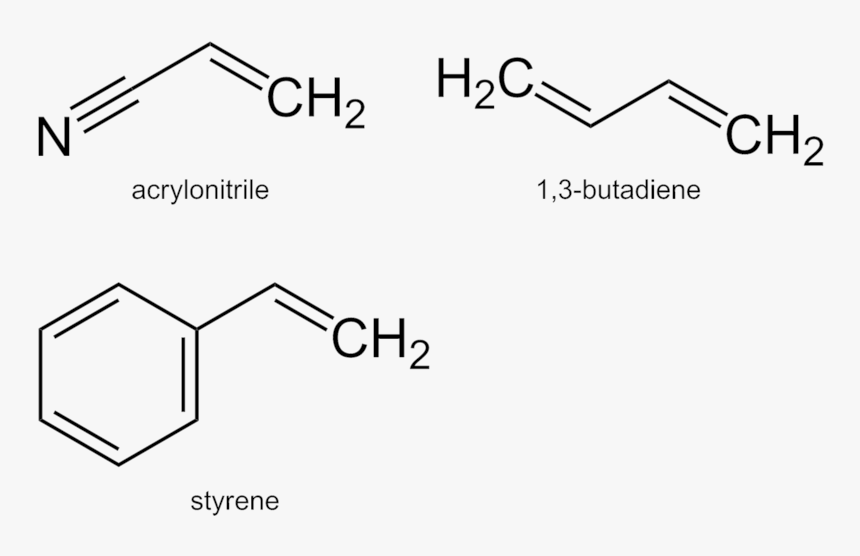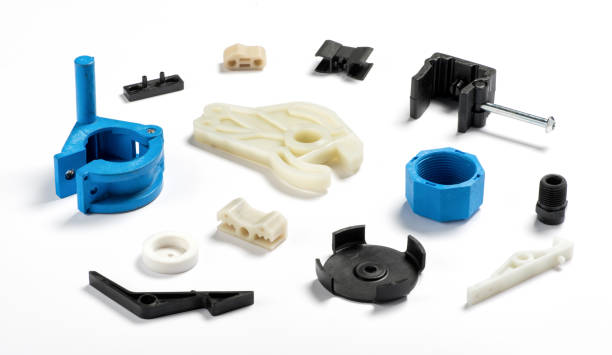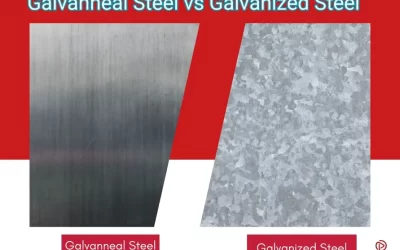
Acrylonitrile Butadiene Styrene, commonly known as ABS plastic, is a thermoplastic polymer widely recognized for its robustness, flexibility, and impressive impact resistance. In a world increasingly driven by innovation and adaptability, ABS plastic has found its way into numerous applications, from toys and consumer electronics to automotive parts and medical devices.
But what is ABS plastic, and what does ABS stand for in plastic? This comprehensive guide will delve into ABS plastics, uncovering its core elements, remarkable properties, typical applications, and the manufacturing process.
The Fundamental Structure of ABS Plastic

Structure of ABS plastic
At its core, ABS is a copolymer, an assembly of different monomers that combine to form a singular, robust material with a broad range of applications. Each constituent part of ABS plastic—Acrylonitrile, Butadiene, and Styrene—provides unique properties to the overall structure, contributing to its exceptional versatility.
Table 1: Key Monomers of ABS Plastic and Their Contributions
| Monomer | Contribution to ABS Plastic |
|---|---|
| Acrylonitrile | Offers chemical and heat resistance and lends rigidity to the structure. |
| Butadiene | Provides toughness and impact strength, especially at low temperatures. |
| Styrene | It contributes to the processing ease, offers rigidity, and enhances the glossy finish. |
To further understand the core structure of ABS plastic, it is crucial to examine the individual monomers that form this distinctive material.
1. Acrylonitrile
Acrylonitrile is a volatile, colorless liquid that contributes chemical and heat resistance to ABS plastic. It is the acrylonitrile in ABS that enhances the hardness and rigidity of the plastic, making it a highly durable material.
2. Butadiene
Butadiene is a colorless gas that is transformed into a rubbery polymer, adding resilience and impact resistance to the ABS structure. Butadiene’s primary role in ABS plastic is to provide toughness, ensuring the plastic remains durable even under stress and at lower temperatures. This attribute is particularly valuable in applications such as automotive parts, where materials are often exposed to a wide range of temperatures.
3. Styrene
Styrene is a monomer that forms a hard, transparent plastic when polymerized. Styrene’s primary contribution to ABS plastic is its glossy finish, rigidity, and the ease it provides in processing. It enhances the aesthetics of the final product and plays a crucial role in applications where visual appeal matters.
Distinguishing Features of ABS Plastics
ABS plastic’s popularity in the manufacturing sector can be attributed to its unique physical and mechanical properties. This section will further delve into the defining features of ABS plastics.
Table 2: Key Properties of ABS Plastic
| Property | Description |
|---|---|
| Impact Resistance | ABS plastic can absorb significant shock without damage. This makes it ideal for applications where durability is critical, such as in automotive parts or sports equipment. |
| High Durability | ABS plastic is resistant to physical wear and tear, maintaining its structure and performance over extended periods. |
| Versatility | ABS plastic can be molded into various shapes and sizes, making it suitable for multiple applications. |
| Thermal Stability | ABS can withstand a wide temperature range, making it useful in cold environments and high-heat applications. |
| Chemical Resistance | ABS has excellent resistance to many chemicals, making it a good choice for containers or equipment exposed to corrosive substances. |
1. Impact Resistance
One of ABS plastic’s key advantages is its high impact resistance. Even when subjected to substantial physical stress, ABS plastic can absorb shock without cracking or breaking. This property is primarily attributed to butadiene, which toughens the plastic.
2. High Durability
ABS plastic is incredibly durable and can resist physical wear and tear over long periods. This resilience and its resistance to many chemicals make ABS plastic a go-to choice for longevity applications.
3. Versatility
The versatility of ABS plastic is another of its distinguishing features. It can be easily molded and machined into almost any shape and size, catering to an extensive range of applications. From toys to automotive parts, ABS plastic’s adaptability makes it a universal solution across industries.
4. Thermal Stability
ABS plastic demonstrates impressive thermal stability and can maintain its structure and performance over a wide temperature range. Its ability to withstand cold and heat makes it a reliable material for applications subject to varying temperature conditions.
5. Chemical Resistance
Another remarkable property of ABS plastic is its resistance to many chemicals. This includes various acids, alkalis, salts, and even some oils. This resistance makes ABS an excellent choice for applications like chemical containers or industrial equipment that may be exposed to corrosive substances.
Different Physical and Mechanical Properties of ABS Plastic
ABS plastic, a blend of acrylonitrile, butadiene, and styrene, exhibits a combination of properties that make it uniquely suited to a wide variety of applications.
These properties span a range of physical and mechanical characteristics that define the behavior of ABS plastic under different conditions.
- Physical Properties of ABS Plastic
The physical properties of ABS plastic refer to the attributes that are observable or measurable without changing the material’s identity. These include properties like density, melting point, and thermal conductivity.
- Mechanical Properties of ABS Plastic
The mechanical properties of ABS plastic refer to how the material responds to applied forces. These include properties such as tensile strength, impact strength, and hardness.
The table below provides numerical values for a selection of the physical and mechanical properties of ABS plastic. It should be noted that these values can vary depending on the specific formulation of the ABS plastic, so they should be taken as approximate averages.
Table 3: Physical and Mechanical Properties of ABS Plastic
| Property | Typical Value | Units |
|---|---|---|
| Density | 1.04 | g/cm³ |
| Melting Point | 105 | °C |
| Thermal Conductivity | 0.2 | W/(m·K) |
| Tensile Strength | 40 | MPa |
| Impact Strength | 20 | kJ/m² |
| Flexural Modulus | 2.2 | GPa |
| Rockwell Hardness | R110 | – |
ABS Plastic Sheets: An Overview
ABS plastic sheets represent a popular form of ABS plastic, delivering the same remarkable properties in a versatile flat format. They offer a diverse range of applications that span multiple sectors, thanks to their outstanding durability, impact resistance, and malleability.

ABS plastic sheets in black
What Are the Properties of ABS Plastic Sheets?
Similar to ABS plastic in general, ABS plastic sheets exhibit several distinguishing features that set them apart from other materials.
Table 4: Properties of ABS Plastic Sheets
| Property | Description |
|---|---|
| Excellent Formability | ABS plastic sheets can be readily formed into desired shapes and sizes, making them suitable for various applications. |
| High Impact Resistance | These sheets can absorb substantial shocks without damage, a property that stems from the toughness of ABS plastic. |
| Easy to Paint and Glue | ABS plastic sheets can be easily painted or glued, making them ideal for aesthetic applications. |
| Good Chemical Resistance | They maintain stability when exposed to many chemicals, making them suitable for industrial applications. |
The physical properties and durability of ABS plastic sheets make them suitable for a wide range of applications. Some common uses include protective encasings for machinery, robust signage and displays, automotive parts, and even musical instruments.
Wide-Ranging Applications of ABS Plastic

Many different injection plastic parts of white, blue, and black color spread on white background
Different parts made from ABS plastic
Due to its versatile nature, ABS plastic is used in several industries. It’s valued for its strength, heat resistance, and ability to be easily molded into complex shapes.
Table 5: Applications of ABS plastics
| Industry | Applications | Benefits |
|---|---|---|
| Automotive | Dashboards, bumper parts, wheel covers | Durability, impact resistance, heat resistance |
| Consumer Goods | Kitchen appliances, phone cases, toys | Durability, aesthetic appeal |
| Medical | Surgical instruments, medical device encasings | Ease of sterilization, compatibility with human tissue, safety |
| Electronics | Computer keycaps, printer parts, electronic housings | Electrical insulation, heat resistance |
| Construction | Plumbing systems | Strength, durability, resistance to corrosion |
Delving Into the ABS Plastic Manufacturing Process
The production of ABS plastic is a comprehensive process involving several steps to combine the base monomers—acrylonitrile, butadiene, and styrene—into a cohesive, robust material. This process is a prime example of emulsion polymerization, where the monomers are mixed with a soap-like emulsifying agent, allowing them to blend smoothly in a water medium.
Table 6: Steps in the ABS Plastic Manufacturing Process
| Step | Description |
|---|---|
| Monomer Preparation | The monomers, emulsifying agents, and initiators are combined in a reactor. |
| Polymerization | The monomers undergo a reaction to form a chain-like structure, creating a mass of ABS resin. |
| Cooling and Degassing | The ABS resin is cooled to solidify it and undergoes degassing to remove any remaining monomers or volatile substances. |
| Pelletizing | The solid ABS resin is then cut into small pellets, ready for further processing into final products. |
Step 1: Monomer Preparation
In the first stage of the process, the three base monomers—acrylonitrile, butadiene, and styrene—are combined in a reactor vessel. This vessel also contains an emulsifying agent to ensure a smooth mixture and an initiator to start the polymerization reaction.
Step 2: Polymerization
Once the monomers are thoroughly mixed, the polymerization process begins. The monomers react with one another to form a polymer chain, a process facilitated by the initiators. The result of this process is a mass of ABS resin.
Step 3: Cooling and Degassing
Following the polymerization, the ABS resin is cooled to solidify it. During this cooling process, the resin undergoes degassing, which is designed to remove any remaining monomers or volatile substances. This step is crucial to ensure the safety and stability of the final product.
Step 4: Pelletizing
After cooling and degassing, the solid ABS resin is cut into small, easy-to-handle pellets. Depending on the final product’s requirements, these pellets are ready for further processing, including ABS extrusion, ABS injection molding, or other methods.
The Environmental Impact of ABS Plastic
Although ABS plastic has proved its worth with diverse applications, its environmental footprint cannot be disregarded. This multi-faceted issue encompasses the production process and the material’s end-of-life management.
1. Manufacturing Emissions
The production process of ABS plastic involves emitting volatile organic compounds (VOCs), particularly styrene. These contribute to air pollution and raise health concerns. Efforts to minimize these emissions are ongoing, with many manufacturers turning to cleaner production methods.
2. Non-Biodegradability
ABS plastic is durable and long-lasting, attributes that become problematic when the material’s lifecycle ends. ABS is not readily biodegradable and can persist in the environment for many years, contributing to the growing plastic pollution problem. Consequently, ensuring the responsible disposal and recycling of ABS plastic products is crucial.
3. Recycling Challenges
ABS plastic falls under the recycling code 7 (“Other”), indicating it is recyclable. However, recycling ABS plastic presents several challenges, primarily because it is typically mixed with other plastic types. This mixed plastic waste complicates the sorting process, leading to low recycling rates for ABS. Ongoing research and technological advancements aim to improve the efficiency of plastic sorting and recycling, offering hope for a more sustainable future for ABS plastic.
Prolean’s Plastic Machining Services for ABS Plastic
Prolean offers various machining services tailored to ABS Machining, including ABS CNC machining, turning, milling, and more. In addition, we are also a professional Chinese injection molding company, we provide custom ABS plastic molding service
Whether creating complex geometries for automotive parts or producing simple shapes for consumer goods, Prolean’s machining services deliver high-quality results every time. Their experienced team of engineers and machinists understand the unique properties of ABS plastic, ensuring that every piece is crafted to optimize its strength, durability, and appearance.
Conclusion
ABS plastic’s versatility, durability, and ease of use make it a staple material in many industries. Its unique combination of acrylonitrile, butadiene, and styrene gives it properties that few other materials can match. While the environmental impact of ABS plastic is a challenge that needs to be addressed, advancements in recycling technology and responsible manufacturing processes provide a hopeful outlook for the future of this vital material.
Prolean’s ABS plastic machining services stand out in shaping ABS plastic to meet the requirements of various applications, delivering precision and quality in every piece.
FAQs
What is ABS plastic?
ABS plastic is a common thermoplastic polymer made of acrylonitrile, butadiene, and styrene. It is known for its strength, toughness, and resistance to various physical and chemical factors.
What does ABS stand for in ABS plastic?
ABS stands for Acrylonitrile Butadiene Styrene, and the three monomers combine to form ABS plastic.
What are some common uses of ABS plastic?
ABS plastic is used in many industries due to its versatility. It is commonly found in automotive components, consumer goods like toys and appliances, medical devices, electronic parts, and construction materials like pipes.
Is ABS plastic recyclable?
Yes, ABS plastic is recyclable and classified under recycling code 7 (“Other”). However, recycling rates for ABS plastic are relatively low, and ongoing efforts are being made to improve this.
What services does Prolean offer for ABS plastic?
Prolean offers a wide range of plastic machining services tailored for ABS plastic. These services include CNC machining, turning, milling, and more, ensuring precision and high-quality results for every piece.
Is ABS plastic safe?
Yes, ABS plastic is considered safe for most uses. However, it is vital to ensure that it is used appropriately, particularly in food or medical device applications.
How is ABS plastic made?
ABS plastic is typically made through a process called emulsion polymerization. This involves combining the three monomers—acrylonitrile, butadiene, and styrene—in the presence of emulsifying agents and polymerizing initiators. The result is a mass of ABS resin that can then be cooled and shaped into various forms.




Very good post On ABS Machining ! I want to add that sharp-cutting edges of tool significantly reduces the thermal distortion risk on ABS wokpieces. Thanks med later!!!!!!!!!
YEah, that’s a good point.
¡Excelente! ¿Qué opinas sobre el mecanizado CNC frente al moldeo por inyección para mis prototipos personalizados? ¿Necesito algunos componentes de ajuste precisos?
Gracias! Ambos métodos son útiles para prototipos personalizados. El mecanizado CNC es ideal para componentes de alta precisión y bajos volúmenes, ofreciendo excelente tolerancia. El moldeo por inyección, en cambio, es rentable para producciones mayores. Si necesitas ajustes precisos, el CNC es una excelente opción.